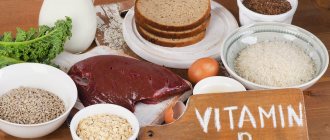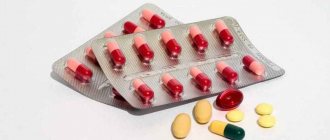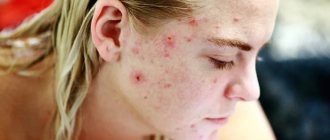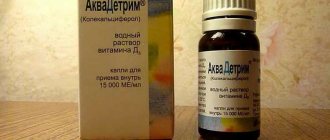Thiamine chloride is a synthetic dosage form of vitamin B1, which is widely used in medicine. The substance is an essential water-soluble vitamin, but in addition to treating vitamin deficiency, the active compound has a number of other beneficial properties for the body.
The drug is available in various forms and has a number of indications and contraindications, which will be discussed in this article. You will also learn about the recommended dosages and rules for using thiamine for health and beauty.
Thiamine hydrochloride instructions for use
Thiamine hydrochloride (vitamin B1) is administered orally and intramuscularly.
In tablet form, 0.01 g is prescribed in the morning, at lunch and in the evening, a quarter of an hour after meals. Children under 3 years of age are prescribed 0.005 g every other day, preschool age children – 0.005 g three times every two days, schoolchildren – 0.01 g three times a day. The course of treatment is 1 month.
injections for adults are prescribed in a dose of 0.5-1 ml of a 5% solution per day. The course of treatment ranges from 10 days to 1 month.
Pharmacological effects
The main directions of action of vitamin preparations:
- immunostimulating;
- antioxidant;
- metabolic;
- ganglionic blocking;
- replenishing B1 deficiency.
The product affects the metabolism of proteins, fats and carbohydrates, and is part of cocarboxylase, an enzyme responsible for the reactions of glucose and nucleotides. The medicine stimulates the formation of ATP and normalizes the electrolyte balance of the blood. Thiamine chloride is necessary for the functioning of the central and peripheral nervous systems and is involved in the effects of adrenal hormones.
Dosage forms
Drug release options:
- Ampoules. Thiamine is available in 2.5% or 5% concentration (25 or 50 mg in 1 ml of water for injection). Each ampoule contains 1 ml of vitamin solution, glass containers are packed in 5 or 10 pieces. in the box. The product is intended for intramuscular or subcutaneous administration.
- Capsules. B1 is available in optimal dosages from 100 to 300 mg in one capsule, coated with a soft gel shell. Intended for oral administration. Thiamine chloride tablets are available in concentrations ranging from 2 to 10 mg for oral use.
Indications
Indications for taking thiamine hydrochloride are:
- In toxicology - intoxication with carbon disulfide, tetraethylene lead, methanol, arsenic, mercury.
- In endocrinology - excessive production of thyroid hormones.
- In gastroenterology - defects in the mucous membrane of the stomach and duodenum, decreased intestinal motility, chronic diarrhea.
- In psychiatry and narcology - amnestic syndrome due to vitamin B1 deficiency.
- In neurology - radiculopathy, neuralgia and neuritis, incomplete and complete paralysis, acute upper hemorrhagic polioencephalitis.
- In otolaryngology - an increase in the amount of endolymph in the cavity of the inner ear, causing dizziness and other vestibular disorders.
- Infectious diseases - polio, inflammation of the membranes of the brain and spinal cord.
- In cardiology - damage to the heart muscle due to metabolic disorders in it, coronary heart disease.
- In dermatology - herpetic infection, dermatoses, scaly lichen, dermatitis.
- Lack of vitamin B1 in the body.
- Long-term parenteral nutrition.
- Being on chronic hemodialysis.
general information
The active compound thiamine chloride is vitamin B1, which is obtained by synthesizing it in a laboratory and adding a chloride moiety to the molecule. The substance is a mixture of phosphorus esters, the most active of which is pyrophosphate. This drug has better bioavailability and digestibility compared to the natural vitamin, and the biological properties of the two substances are absolutely identical.
Solgar, Vitamin B1 (Thiamin), 500 mg, 100 Tablets
1 223 ₽
Buy at a discount
Scientists first started talking about the healing properties of a nutrient isolated from rice bran in 1911, and in 1929 Eijkman received the Nobel Prize for using the drug to treat beriberi. Artificial vitamin B1 in the form of chloride and bromide was obtained in 1946 at the Moscow experimental vitamin plant, and since then thiamine chloride has been used in medicine.
special instructions
- It is advisable to avoid parenteral administration of the drug, as it is often complicated by allergic reactions.
- Administration of the drug per os is not advisable for malabsorption syndrome, resection of the small intestine and other pathologies that affect the absorption of vitamins in the gastrointestinal tract.
- Therapy for hypo- and avitaminosis of vitamin B1 is carried out in combination: administration of drugs and diet therapy.
- In case of upper acute hemorrhagic polioencephalitis, vitamin B1 must be taken before administering dextrose.
Vitamin preparations
Injectable or oral versions of thiamine chloride can be purchased at varying prices at drugstores and health websites. The cost of supplements depends on the country of production and the concentration of the active substance in one dose. When choosing products, you should pay attention to product reviews, the price of the daily dose, and the number of pieces in one package.
Thiamine preparations in capsules and ampoules (table):
| Name | Release form | Price | Recipe in Latin |
| Thiamine chloride ECHO | Capsules | From 176 rub. | Thiamine chloride-ECHO 100 mg |
| Vitamin B1 Solgar | Capsules | From 524 rub. | Vitamin B1 100 mg Solgar |
| Vitamin B1 Nature's plus | Capsules | From 986 rub. | Vitamin B1 300 mg Nature's plus |
| Thiamine-vial 5mg/ml | Ampoules | From 28 rub. | Thiamine-Vial 5% – 1 ml |
| Thiamine 5%-1ml JSC Borisov Medical Preparations Plant | Ampoules | From 33 rub. | Thiamine chloride 5% – 1 ml N.10 |
| Thiamine 5% -1ml Dalkhimpharm | Ampoules | From 34 rub. | Thiamine chloride 5% – 1 ml |
Reviews
According to an analysis of patient reviews, thiamine hydrochloride has the pharmacological effect on the body specified in the instructions.
The drug effectively eliminates or reduces the symptoms of diseases both in monotherapy and in complex treatment.
If the instructions are followed, the use of thiamine hydrochloride extremely rarely leads to side effects. They often manifest themselves as hypersensitivity reactions.
04/22/2018 PreparationsComments: 0 “Ointment Vividim instructions for use Aminocaproic acid instructions for use”
Signs of overdose
When introducing excessive dosages of thiamine chloride solution, the following reactions are observed:
- phenomena of hypercoagulation and thrombus formation;
- disorders of purine nucleotide metabolism;
- tachycardia, drop in blood pressure and collapse;
- difficulty breathing;
- tremor of the muscles of the lower extremities;
- psycho-emotional arousal;
- renal dysfunction.
If such signs appear, the administration of the drug is stopped immediately. In most cases, symptomatic therapy is sufficient to eliminate unwanted manifestations; detoxification solutions are sometimes used.
Table of foods containing thiamine
You can compensate for thiamine deficiency by including certain foods in your diet. You can see an approximate list of these in the following table:
| Product name | Substance content (in mg per 100 g of product) |
| Milk | 0,05 |
| Hard cheese | 0,05 |
| Nuts: almonds, hazelnuts, walnuts | 0,03 |
| Legumes: beans, lentils, soybeans | 0,5-0,94 |
| Cereals, rye and wheat bread | 0,20 |
| Cereals: oatmeal, wheat, barley, pearl barley, rice, corn, semolina | 0,40 |
| Vegetables: green peas, zucchini, cabbage, potatoes | 0,04-0,10 |
| Fruits: pears, apples, bananas, dates, figs | 0,05 |
| Berries | 0,03-0,05 |
| Mushrooms | 0,10-0,20 |
Vitamin B is found in peas, buckwheat, baked goods made from wholemeal flour, sprouted wheat, brewer's yeast, and algae.
Due to its beneficial properties, thiamine is also used in hair care, adding the substance to various masks. To improve the condition of the hair and prevent hair loss, a small amount of a liquid vitamin solution is added to the shampoo during washing. Thiamine Vial is suitable for these purposes. Before use, you must carefully study the instructions for your hair. As a result of proper use, hair becomes healthy, silky, and manageable.
It is not recommended to use Thiamine Vial in its pure form, as it can cause an allergic reaction. To achieve the best effect, the product is mixed with cosmetic oils and other nourishing ingredients, and then applied along the entire length of the hair. After some time, this mask is washed off with shampoo.
Drug interactions
To exclude the development of side effects, it is necessary to take into account the peculiarities of the interaction of Thiamine with other medications.
- Simultaneous injection use with cyanocobalamin or pyridoxine (B12 and B6, respectively) is contraindicated. It’s just that the former increases the risk of allergic reactions, and B6 makes it difficult to convert thiamine into a bioactive form.
- Thiamine should not be mixed with streptomycin or penicillin, since these antibiotics are destroyed by the vitamin.
- It is forbidden to mix nicotinic acid with Thiamine, otherwise B1 will be destroyed.
- The vitamin reduces the effect of anaprilin and sleeping pills, phentolamine and sympatholytics, redergam and suxamethonium iodide.
Pharmacodynamics and pharmacokinetics
Absorption - high percentage of absorption throughout the small intestine. Digestive enzymes are pre-released before the drug is absorbed. The concentration of the drug product in the blood is low.
Distribution - free thiamine is released in plasma, and phosphorus esters in leukocytes and erythrocytes. Half of the substance settles in muscle tissue and only 40% on internal organs.
Metabolism - the phosphorylation reaction occurs in the liver. This may be due to coenzyme activity. The largest amount of the drug accumulates in the internal organs, as well as in the brain.
It is excreted passing through the kidneys and intestines.
Contraindications and side effects
In most cases, the drug is well tolerated by patients, allowing it to compensate for the lack of thiamine. The vitamin is available in pharmacies without a prescription and is used by athletes and people leading an active lifestyle. Injections should not be given to people who have previously had individual intolerance or hypersensitivity to the components of the drug. The risk group includes people with the following diseases:
- Stomach or duodenal ulcer.
- Arterial hypertension.
Side effects
Thiamine chloride may cause allergic reactions:
- Itching;
- Hives;
- Difficulty breathing and swallowing;
- Quincke's edema.
In rare cases:
- Tachycardia;
- Sweating;
- Collapse;
- Angioedema;
- Anaphylactic shock is very rare.
Side effects of the drug also include:
- Intestinal hemorrhage;
- Damage to the optic nerve;
- Symptoms of bronchial asthma;
- Blood pressure surges;
- Cardiac arrhythmias;
- Malfunction of the nervous system.
Analogs
Level 4 ATC code matches:
Kokarnit
Cocarboxylase
The main analogues of this drug: Vitamin B, Vitamin B1, Aneuril, Aneurin, Benerva, Berin, Betabion, Benevrin, Betamin, Betanevrin, Betaxin, Betiamin, Bevital, Bevitin, Christovibex, Orizanin, Vitaplex Bi.
Also have a similar effect: Neurovitan, Folic acid, Nicotinic acid, Bepanten.
Compound
active ingredient:
thiamine hydrochloride;
1 ml of solution contains thiamine hydrochloride 50 mg;
Excipients:
Unithiol, water for injection.
Dosage form.
Injection.
Basic physical and chemical properties:
a clear solution from colorless to yellowish or greenish-yellowish.
Pharmacotherapeutic group.
Simple preparations of vitamin B1. Thiamine (vitamin B1). ATX code A11D A01.








